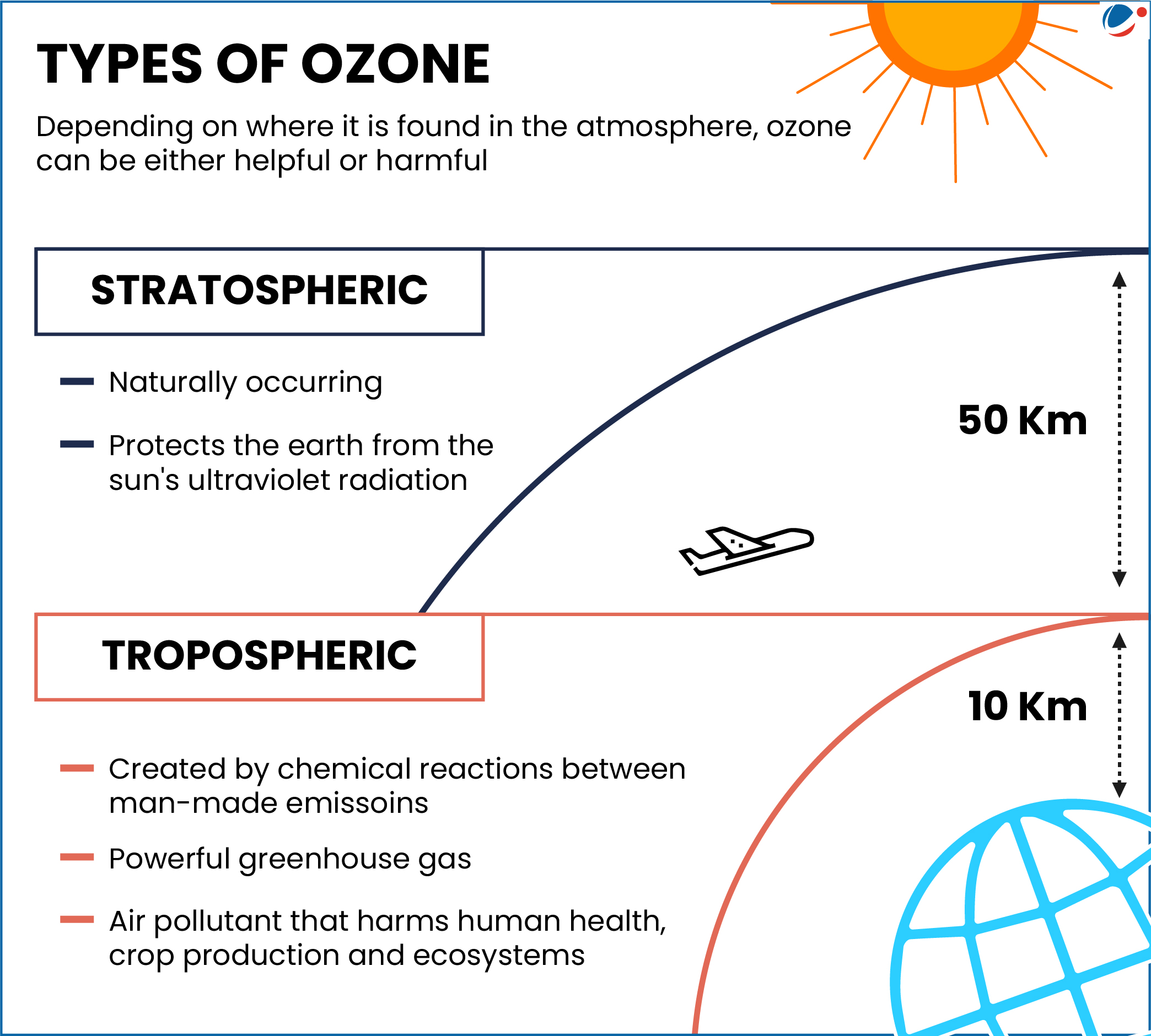The NGT took cognizance of the increasing levels of ground-level ozone, which is a key air pollutant and a precursor to smog.
About ground-level ozone (GLO) or Tropospheric Ozone

- Ozone (O3): It’s a variant of oxygen composed of three oxygen atoms.
- It occurs both in the Earth’s upper atmosphere and at ground level/ Tropospheric Ozone (See Image).
- Genesis of GLO: It’s a short-lived secondary pollutant which is formed in the ground level through atmospheric reactions (Troposphere) in the presence of sunlight.
- Responsible factors: High temperature and emissions of Precursor pollutants. E.g., Oxides of Nitrogen (NOx) & Volatile Organic Compounds (VOCs).
- Peak O3 levels occur in summers.
- Sources of Precursor Pollutant: Largely vehicular emission, fossil fuel power plants, oil refineries, the agriculture sector, etc.
- Central Pollution Control Board (CPCB): has set the following National Ambient Air Quality Standards (NAAQS) for GLO:
- 8-hour average: 100 micrograms per cubic meter (µg/m³)
- 1-hour limit: 180 µg/m³
Impacts of GLO
- Health Impacts: Globally, causes 1 million premature deaths annually; also, aggravates asthma, bronchitis, etc.
- Climate Impacts: Acts as a strong greenhouse gas, contributing to warming.
- Agriculture & Ecosystem Impacts: Reduces crop productivity and carbon uptake by plants, impedes growth, etc.
Steps taken to control the precursors of ozone, i.e. NOx and VOC emissions:
|



